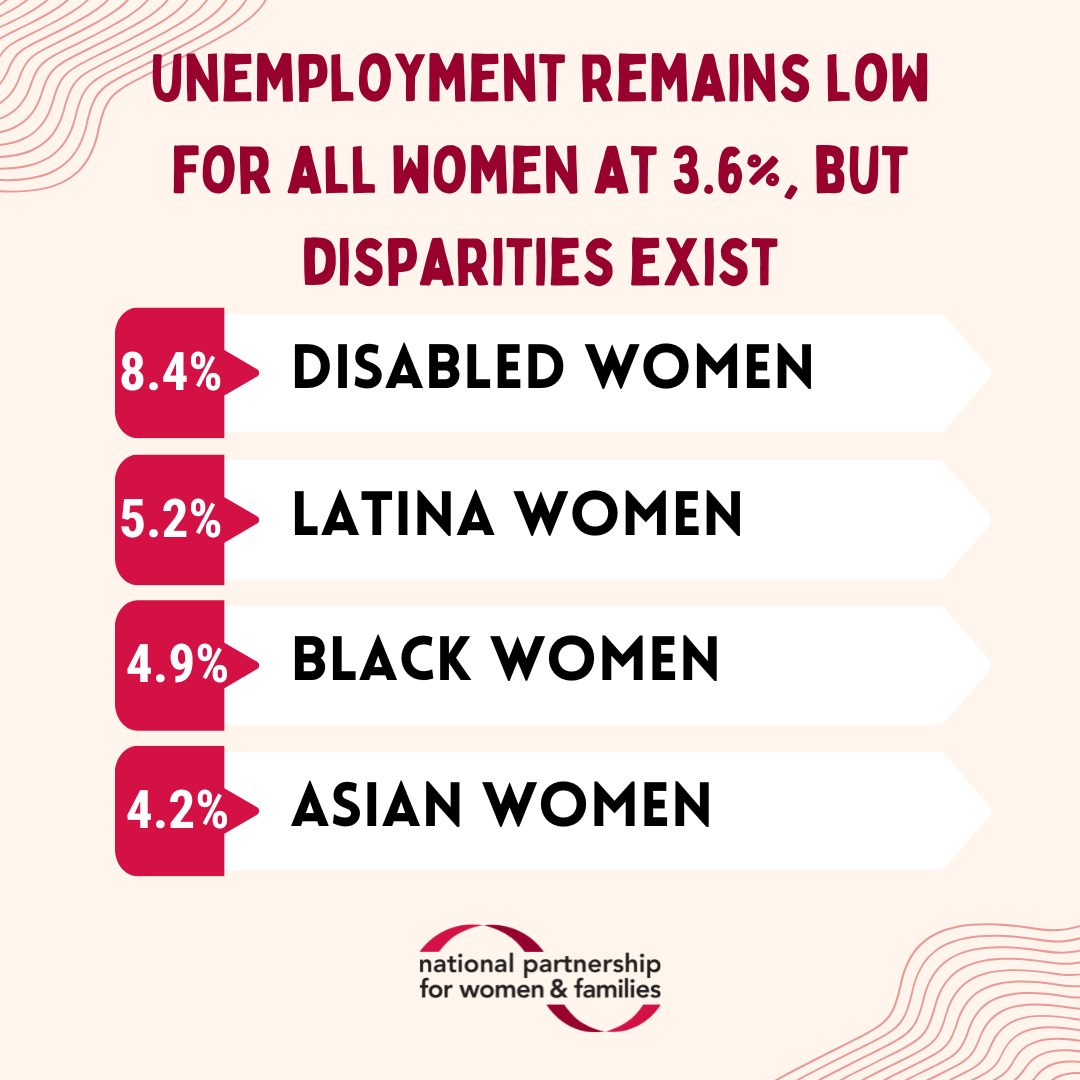It’s the first Friday of the month, which means we’re analyzing new labor market data! While some of today’s Bureau of Labor Statistics (BLS) Jobs Report metrics were hampered by hurricanes and depressed by strike activity, the unemployment survey shows a strong, stable economy for women.
Unemployment rates in October were mostly stable for women overall (3.6 percent steady), Black women (4.9 percent in October vs. 5.3 percent in September) Latinas (5.2 percent vs. 4.8 percent), Asian women (4.2 percent vs. 3.9 percent), and disabled women (8.4 percent vs. 7.5 percent) and largely in line with rates over the last six months.

While the October jobs data showed just 12,000 jobs added to the economy overall, which BLS attributed at least in part to the impacts of hurricanes and labor actions, women still saw growth in industries including private education and health services (+47,000 jobs), leisure and hospitality (+36,000), and government jobs (+32,000).
Especially given this month’s anomalous data, it’s important to situate it in a broader context. The last few years have been tumultuous for workers, women included. In January 2020, women held more than 50 percent of jobs for the first time in a decade. This was largely due to the growth in the service sector, where women hold 53% of jobs. For example, the three most common jobs for women are registered nurse, elementary/middle school teacher, and secretary/administrative assistant, mirroring the shift towards services in the American economy over the past 40 years.
Then the COVID-19 pandemic hit, and care needs forced millions of women out of the paid workforce. In April 2020, women’s labor force participation bottomed out at 54.6 percent, a level not seen since the mid-80s, and women’s unemployment peaked at a historic high of 16.2 percent. Now more than four years later, women’s prime age (25-54) labor force participation continues to reach new heights (77.8 percent in October), wages are up, and inflation is trending downward.
And while there seem to be some enduring equity gains over the last few years, such as the increase in disabled women’s participation in paid work (employment to population ratio of 36.0 percent in October 2024 vs. 29.4 percent in February 2020), other measures, such as the disparity between Black and white women’s unemployment, show persistent inequity.
The drag of continued discrimination could be leading to women feeling poorly about the economy. In fact, women across party lines and race feel worse about the economy than men – a vibes gap we’ve documented that has been in place for nearly half a century.
Much of these negative feelings comes down to how people experience the economy. While wages have increased overall, women’s wages rose less than men’s, leading to a widening of the gender wage gap for the first time in a generation. This decreases women’s relative spending power and makes it harder to afford recent increases in the cost of living.

Despite significant progress in rebuilding our pandemic-decimated economy, women, and especially women of color, are still struggling to make ends meet. As National Partnership President Jocelyn Frye has written, we have unfinished business in making our economy work for everyone.
Read our full analysis of today’s Jobs Report on Twitter.
It’s important to put this month into a broader context. The last few years have been tumultuous for women in the workplace, to say the least. In January 2020, women held more than 50% of jobs for the first time in a decade. https://t.co/6kR6ZmrHQR (4/11)
— Anwesha Majumder (@anwesha_m_) November 1, 2024


